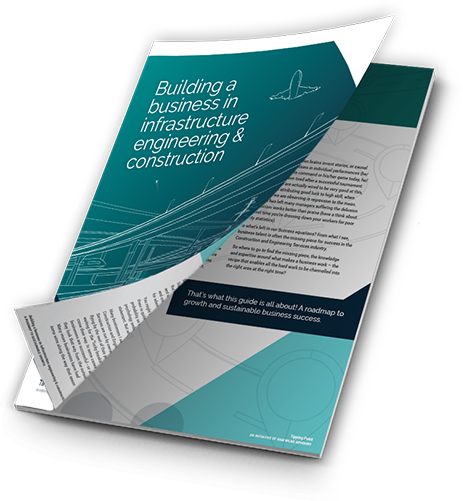Most savvy business owners at some stage consider what their “walk-away” number might be, should an opportunity arise to potentially sell the business. At the end of the day though, the bottom line is that your business will only be worth what a buyer will agree to pay for it.
What’s most likely to catch the attention of a buyer of a business in Engineering & Construction?
Discerning shoppers are typically on the lookout for businesses that contain some “secret sauce”. In management-speak, they’re looking for key business resources and capabilities.
SO if you’re interested in doing more than just dreaming about that big pay-off some day in the future (and rest assured it’s never too early to consider what the end game looks like for your business journey) here’s a few ideas about where to look for resources and capabilities in your business:
- What physical resources do you have? (eg. plant and equipment – just make sure you’re not in possession of (say) expensive Rail Yellow Plant in an over-supplied market)
- What staff resources and capabilities have you developed? (eg. employee skills and experience – you might consider that industry Project Management capability seems a bit thin on the ground at the moment)
- What company resources and capabilities do you have? (eg. business reputation and organisational culture – particularly if you have an ability to retain younger staff who typically find Engineering & Construction to be a difficult industry to fall in love with for reasons I won’t go into here…)
- How do you go about financing your business? (eg. Cash reserves, Investors – particularly “silent” investors with an appetite for further expansion in what is currently a rather buoyant market)
And here’s some tests to apply – is your resource or capability:
- Valuable (does it help satisfy your clients or customers’ needs – either now or in the foreseeable future)?
- Rare (is it owned by none – or very few – of your competitors)?
- Can your competitors readily replicate it?
- Can your competitors get hold of it (say) via suppliers?
Once you’ve identified a key capability, the trick then is to:
- Confirm why you have the resource or capability you have – did you inherit it or did you create it yourself; and then (depending on the answer to (a))
- Do more of the same, or figure out how best to feed and water your capability to make it as resilient as it can be.
And guess what?
By building on your key resource or capability you are simultaneously creating an advantage over your competitors! Simple but effective Management strategy in action.
